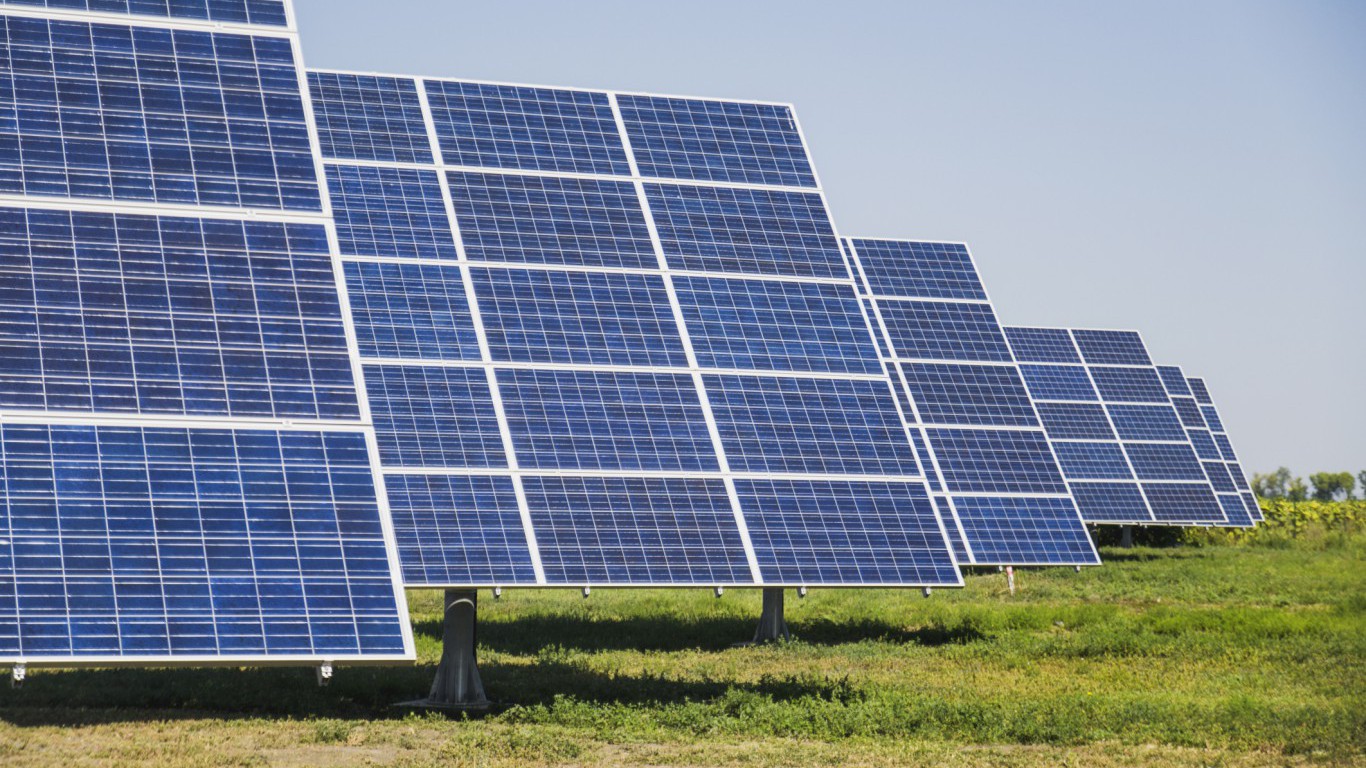
Falling prices and a drop in Chinese investment are on track to reduce year-over-year spending on new solar energy projects, according to Bloomberg NEF (BNEF). In the first six months of 2018, solar investment has dropped by 19% compared to the first half of 2017, and BNEF expects the downward trend to gather momentum in the second half of the year.
In the first half of this year, investment in clean energy projects declined just 1% year over year, and in the second quarter investment actually increased by 8%. The uptick was due primarily to a 33% increase in new wind power projects. Of the $138.2 billion invested in the first half of the year, $76.7 billion was devoted to wind projects.
In the first half of the year, China invested $35.1 billion in solar projects, down 29% year over year. BNEF analysts can foresee the first-ever decline in world solar installation for 2018. In 2017, new solar capacity totaled 98 gigawatts (GW), far more than any other technology, renewable or nonrenewable.
BNEF’s head of Asia-Pacific, Justin Wu, said:
On June 1, the Chinese government released a policy document restricting new solar installations that require a national subsidy, with immediate effect. We expect this to lead to a sharp drop in installations in China this year, compared to 2017’s spectacular record of 53GW.
Senior solar analyst Pietro Radoia added:
It will also mean overcapacity in solar manufacturing globally, and yet steeper price falls. Before the Chinese announcement our team was already expecting a 27% fall in PV module prices this year. Now we have revised that to a 34% drop, to an end-2018 global average of 24.4 U.S. cents per watt.
Three massive wind projects lifted the six-month investment total this year. The Netherlands plans to build a 731.5 megawatt (MW) offshore project while a $1 billion, 478 MW onshore project is on the table for Hale County, Texas. The third major project is a $627 million offshore wind project in Taiwan to generate 120 MW.
U.S. wind power investment rose to $17.5 billion in the first half of 2018, up 121% year over year, and Chinese investment in wind power rose 4% to $17.6 billion.
Here’s BNEF’s list of first-half investment:
China investment of $58.1 billion, down 15% compared to 1H 2017
U.S. investment of $28.8 billion, up 31%
Europe at $16 billion, up 8%
India at $7.4 billion, up 22%
Australia at $4.1 billion, down 1%
Morocco at $2.5 billion, up 12-fold
The Netherlands at $2.3 billion, up 209%
Japan at $2.2 billion, down 67%
Vietnam at $2 billion, up 136-fold
Mexico at $1.9 billion, down 20%
South Africa at $1.7 billion, up 35-fold
Spain at $1.5 billion, up 652%
Ukraine at $1.4 billion, up 12-fold
Germany at $1.3 billion, down 77%
France at $1.3 billion, down 13%
Norway at $1.1 billion, up 231%
Canada at $862 million, up 4%
The U.K. at $664 million, down 51%
Brazil at $597 million, down 81%
Get Ready To Retire (Sponsored)
Start by taking a quick retirement quiz from SmartAsset that will match you with up to 3 financial advisors that serve your area and beyond in 5 minutes, or less.
Each advisor has been vetted by SmartAsset and is held to a fiduciary standard to act in your best interests.
Here’s how it works:
1. Answer SmartAsset advisor match quiz
2. Review your pre-screened matches at your leisure. Check out the advisors’ profiles.
3. Speak with advisors at no cost to you. Have an introductory call on the phone or introduction in person and choose whom to work with in the future
Thank you for reading! Have some feedback for us?
Contact the 24/7 Wall St. editorial team.
 24/7 Wall St.
24/7 Wall St.



